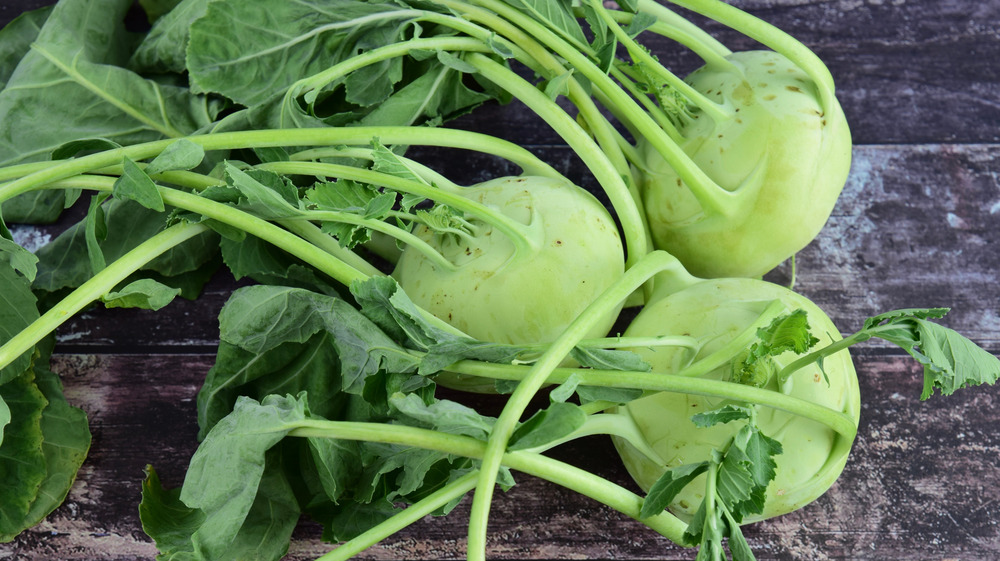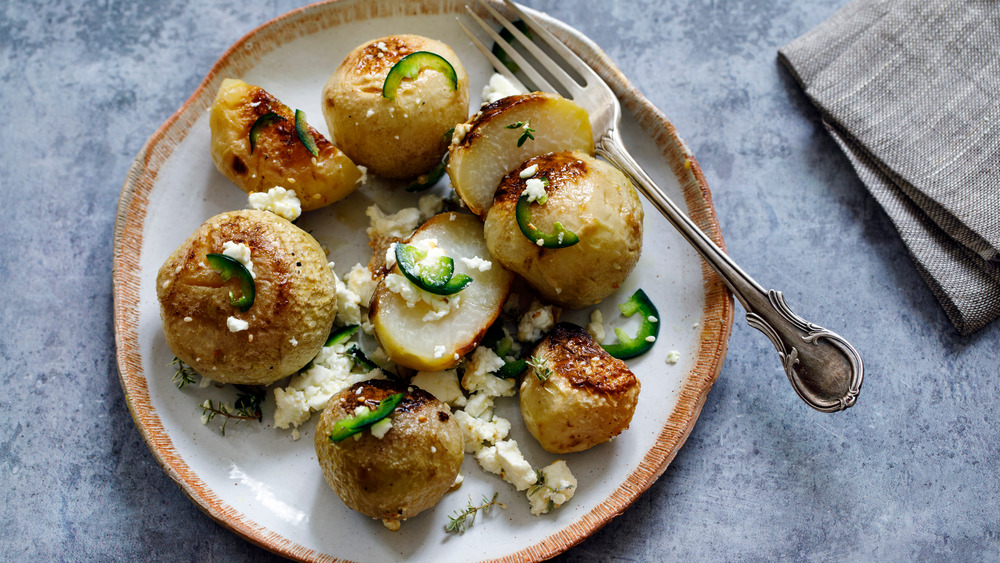You Can Replace These Vegetables With Kohlrabi
As you cruise the produce aisle and tabletops of your favorite farmers market, you may notice an unusual-looking vegetable — one that features a knobby purple or green bulb, long, thin stems, and vibrant green leaves. Also known as German turnip, you've come face-to-face with kohlrabi, a cruciferous vegetable and proud member of the Brassica plant genus, which also includes broccoli, cabbage, kale, Brussels sprouts, and cauliflower (via Healthline).
The Spruce Eats adds that kohlrabi is sometimes dubbed cabbage turnip, and the vegetable is popular in Northern and Eastern Europe (as in Germany and Hungary), Northern Vietnam, and Eastern India. According to FoodPrint, kohlrabi is gaining traction in the United States thanks to our passion for local, seasonal produce, as well as the fact that the vegetable is versatile, fast-growing, and easy to cultivate.
The Food Network explains that all parts of kohlrabi are edible (raw or cooked) and describes the flavor as "peeled broccoli stems with a bit of peppery radish thrown in." The Kitchn agrees and asserts that kohlrabi's firm texture and peppery-sweet taste make it an excellent substitute for broccoli stems, cabbage, radishes, potatoes, and turnips.
Swap in kohlrabi for its endless versatility
Martha Stewart states that since you can enjoy both the bulb and greens of kohlrabi; it's like "a cross between a radish, jicama, broccoli, and collard greens." The magazine asserts that it's best to keep recipes simple when working with the vegetable because kohlrabi's crunchy texture and slightly sweet flavor stand their ground. For inspiration, check out their kohlrabi slaw with apple and mint, roasted kohlrabi with buttered hazelnuts, crispy/salty kohlrabi chips, sautéed kohlrabi with onions and cream, and Asian noodle soup with kohlrabi and tofu.
Taste of Home dishes up three easy and delicious ways to get acquainted with kohlrabi — raw in salads, slaws, and crudite platters; roasted, which caramelizes the vegetable and brings out its inherent sweetness; and shredded/pan-fried for herby kohlrabi fritters topped with yogurt or sour cream.
When shopping, Bon Appétit suggests choosing firm, tight bulbs with their fresh, unwilted leaves attached. The bulb should feel solid like a baseball, and the magazine asserts that the smaller the bulb, the sweeter the kohlrabi.
Nutritionally, The Guardian states that kohlrabi is an excellent source of vitamin C (better than oranges), a powerful antioxidant that boosts the immune system and promotes healthy connective tissue, teeth, and gums. The magazine adds that kohlrabi is crammed with phytochemicals, plant compounds that help prevent cancer, inflammation, and the associated risk of heart disease, stroke, diabetes, Alzheimer's, and osteoporosis.

